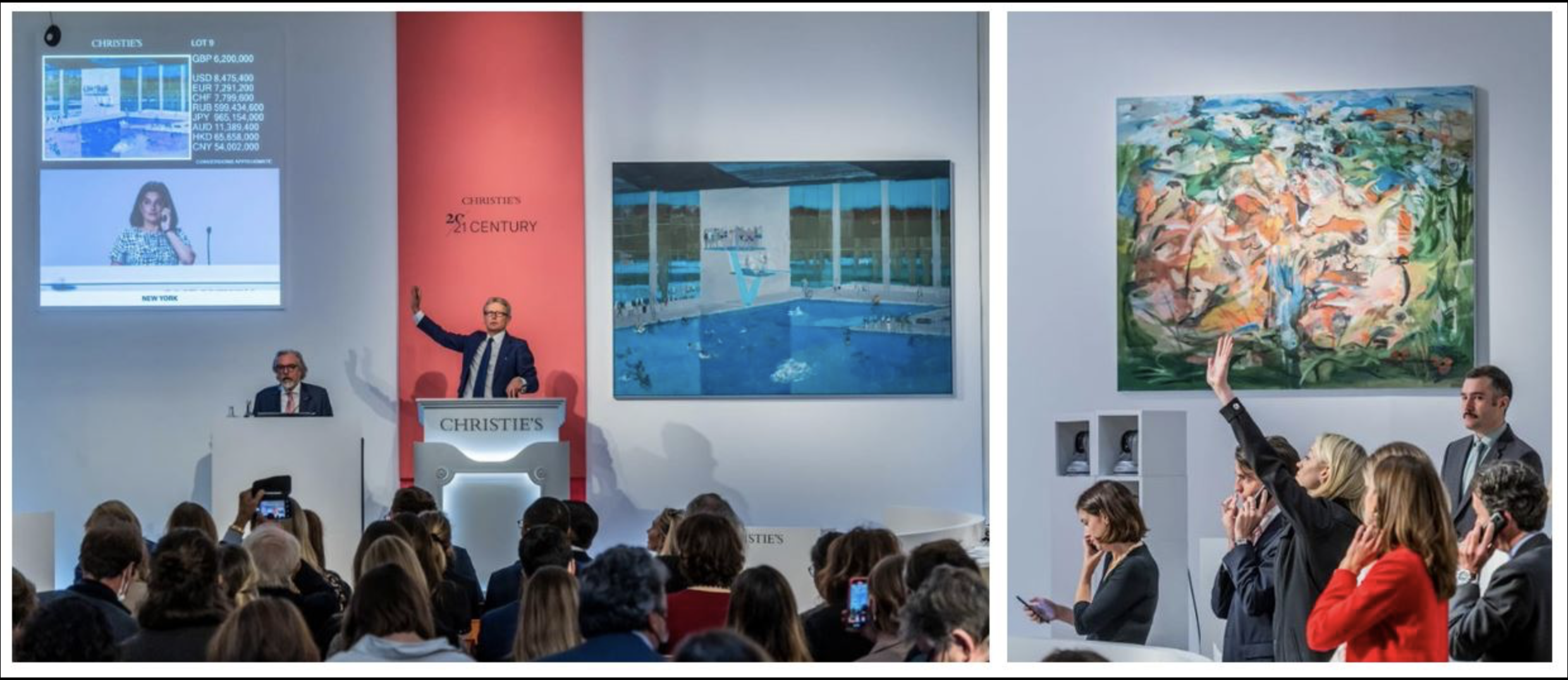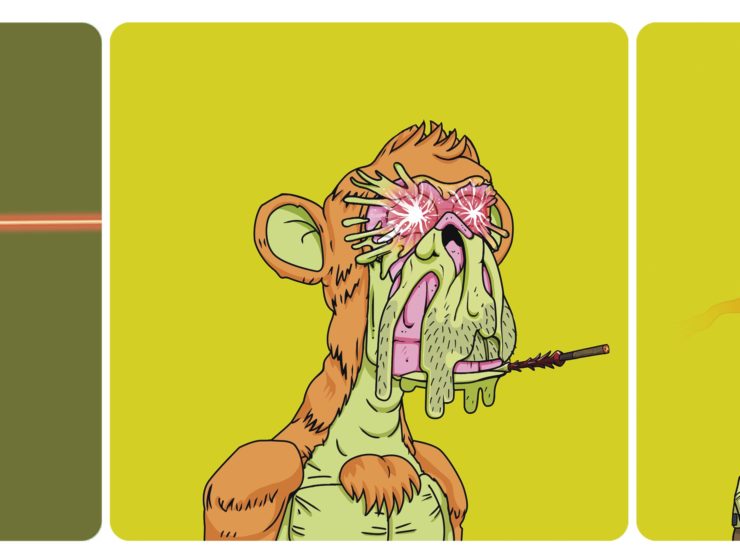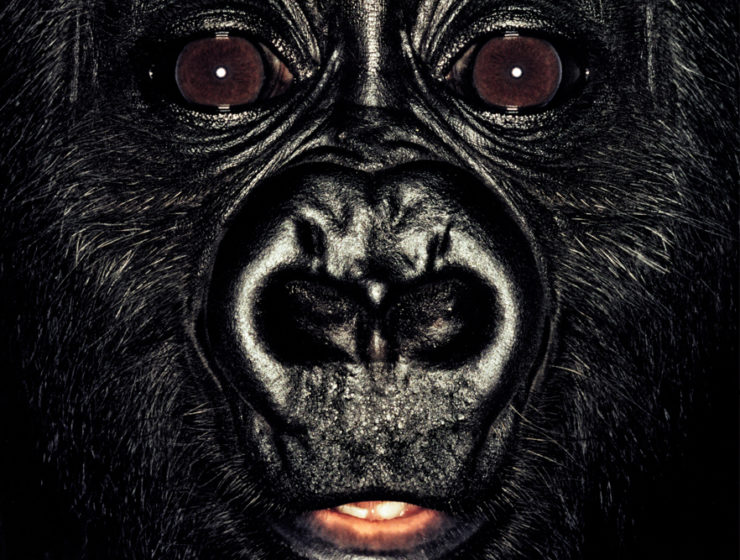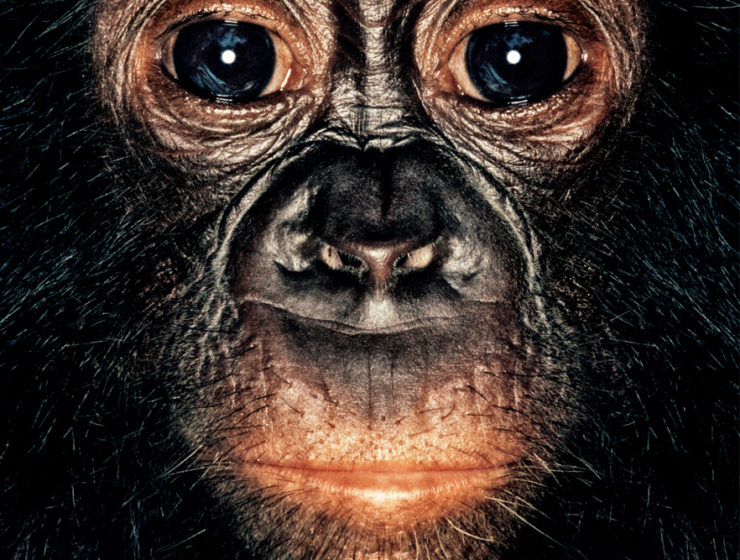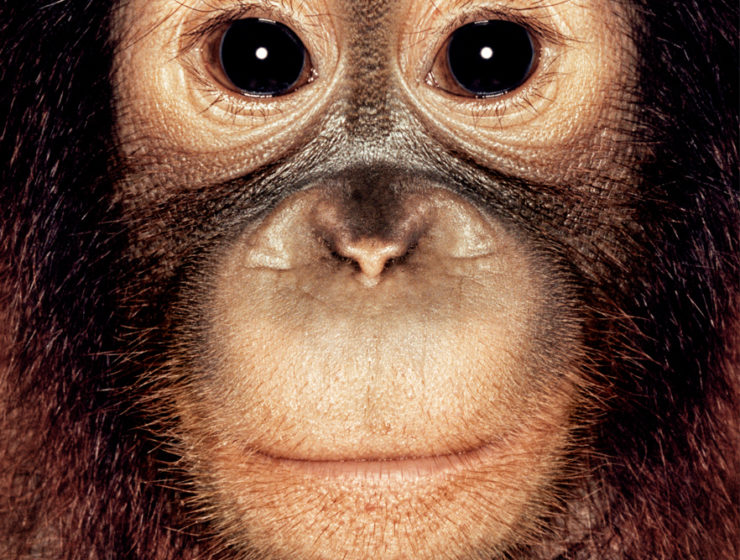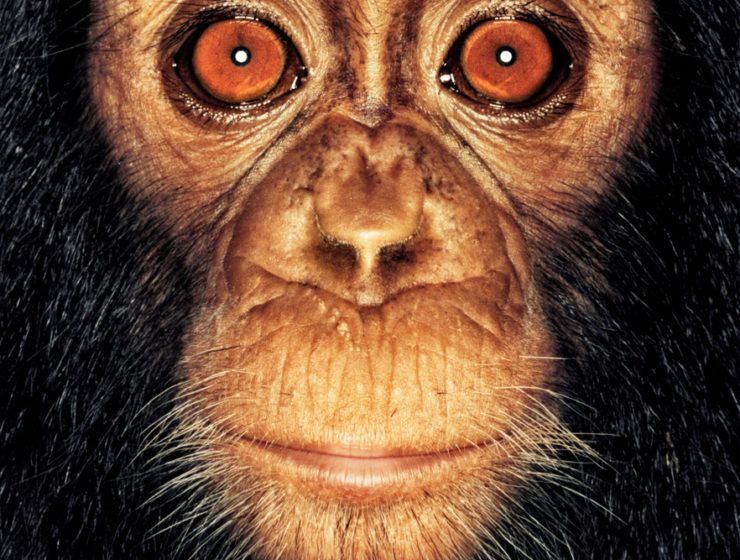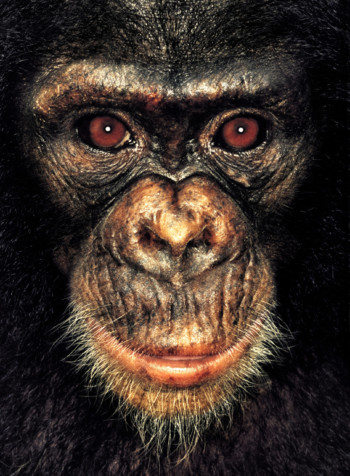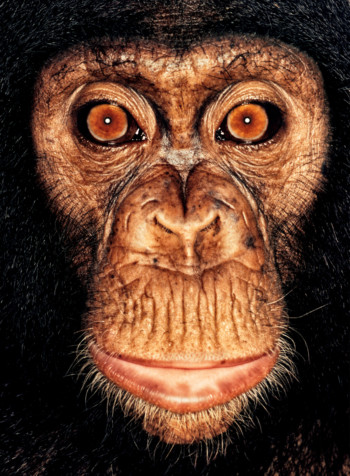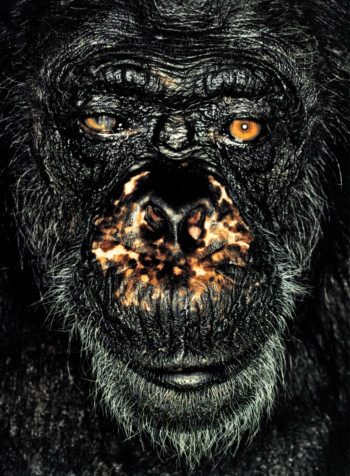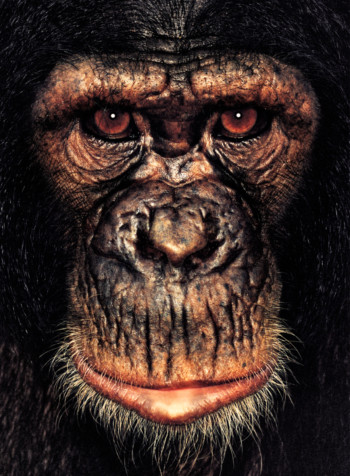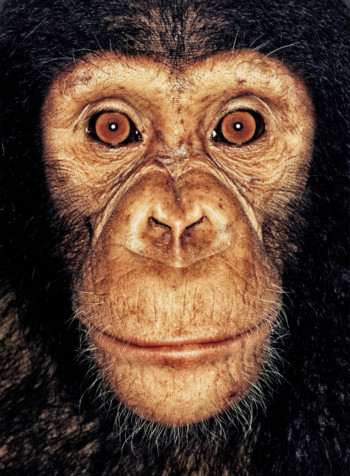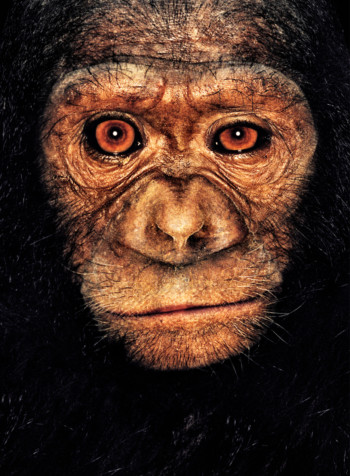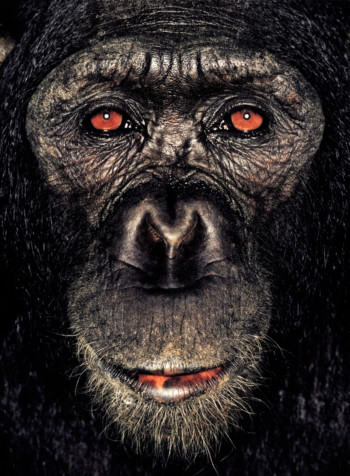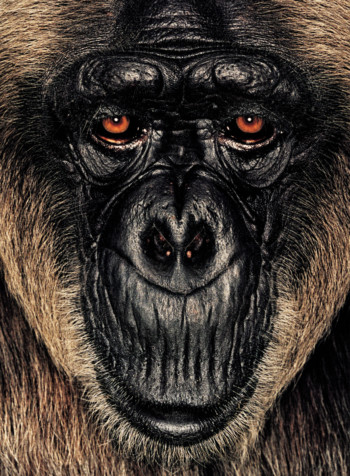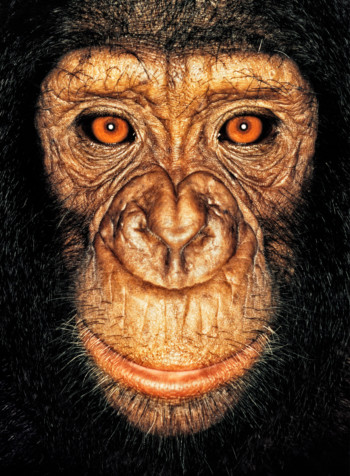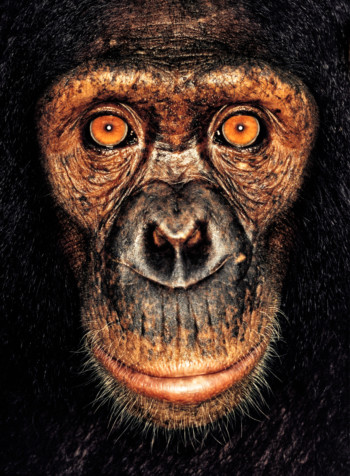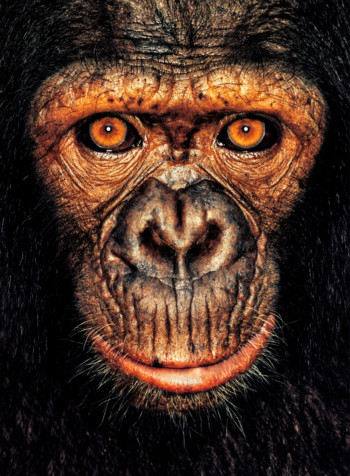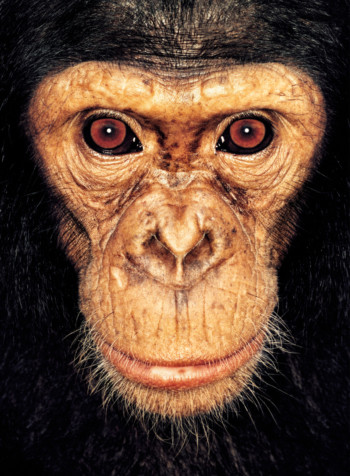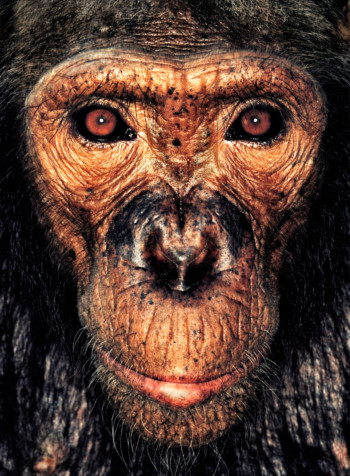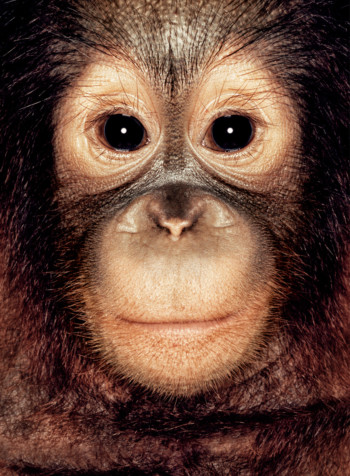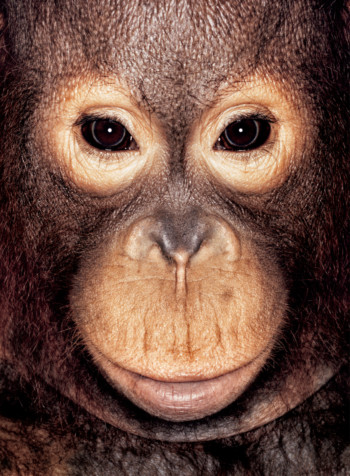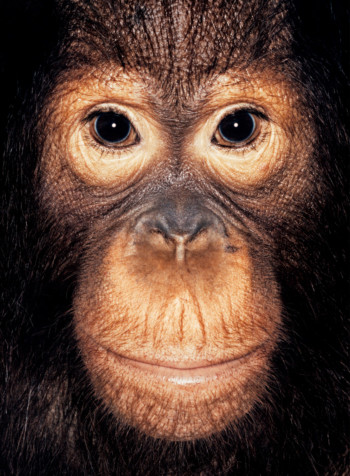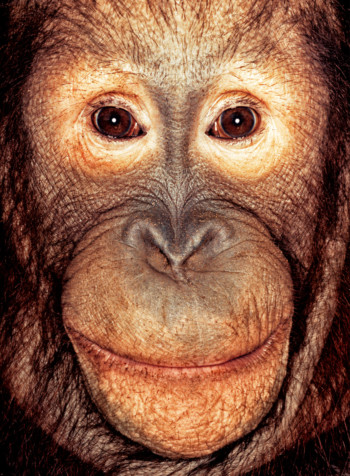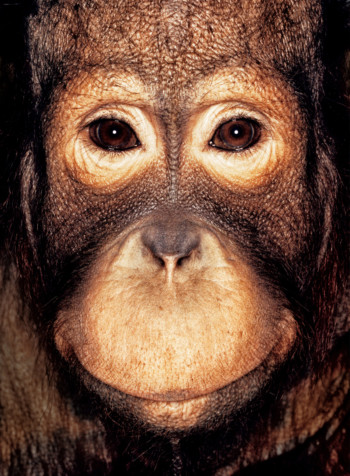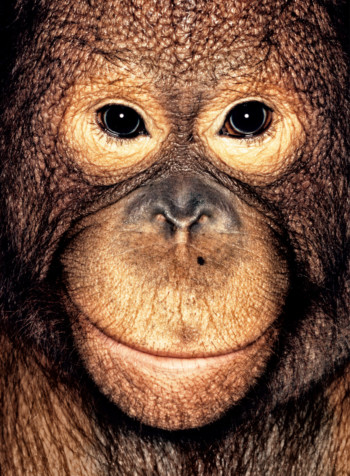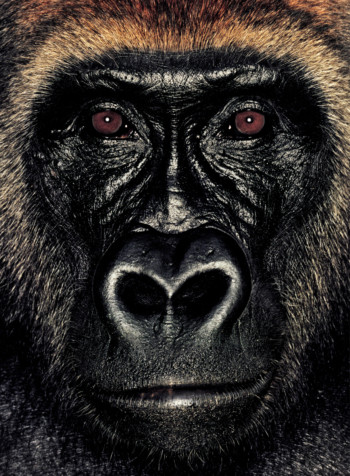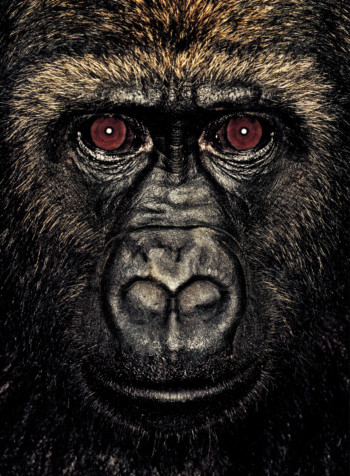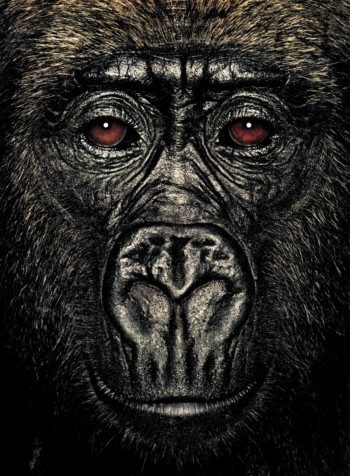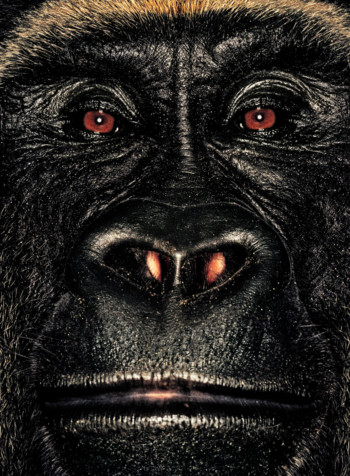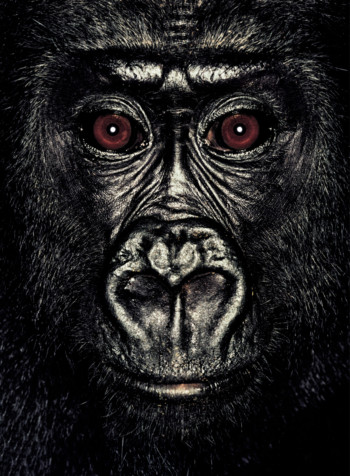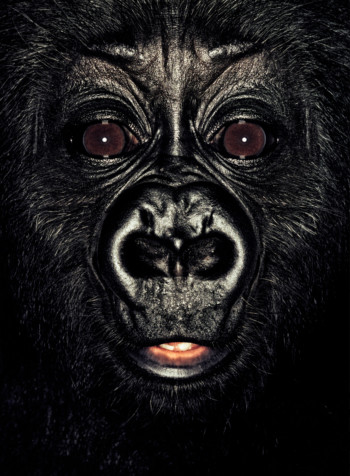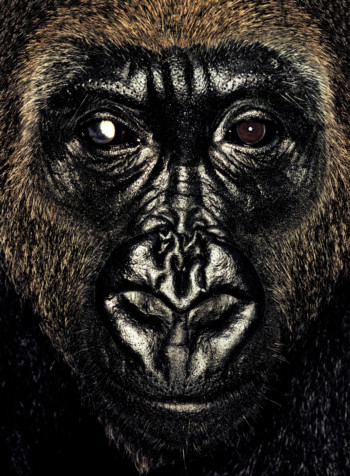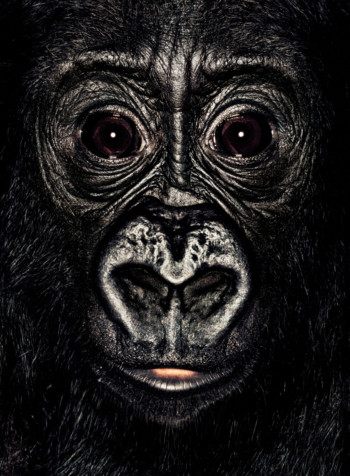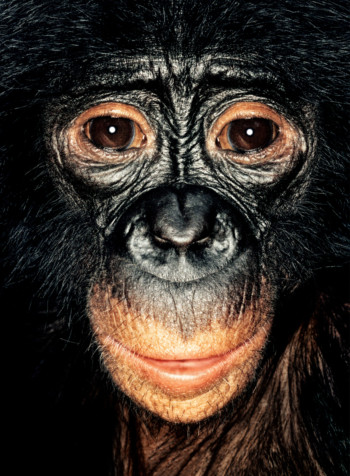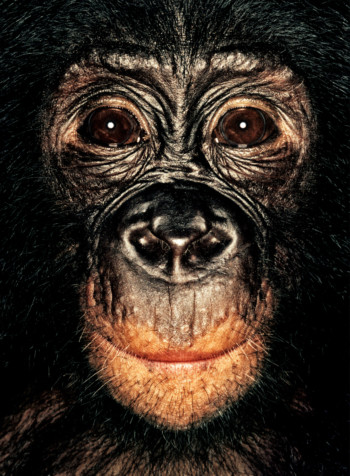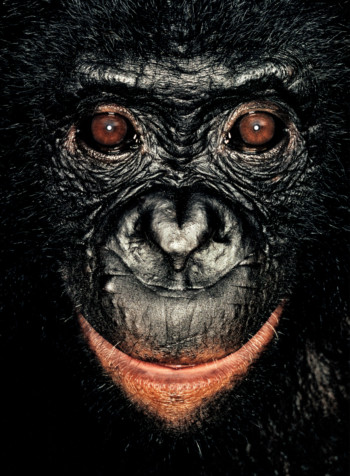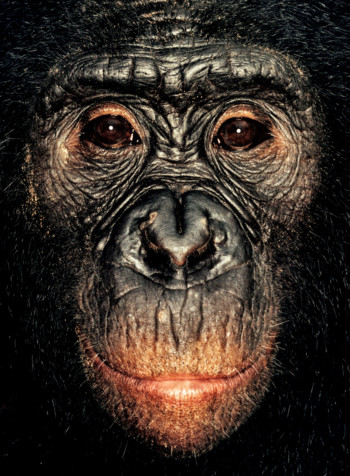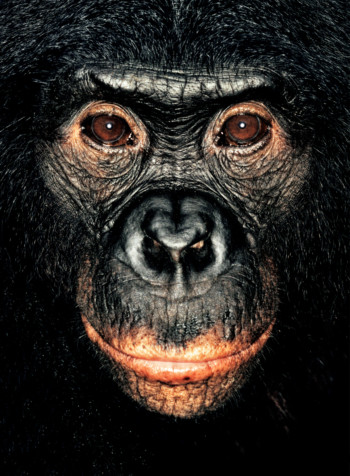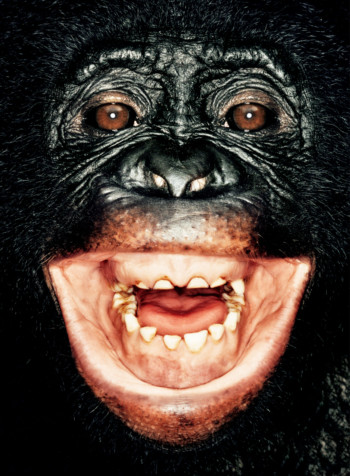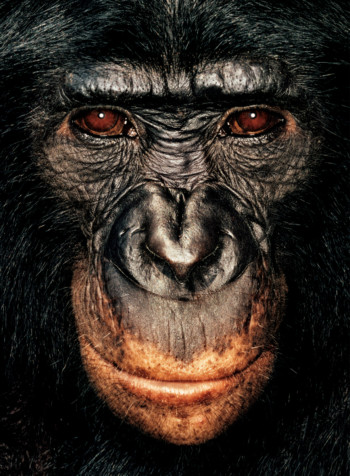© YUGA LABS (EST. 2021) (i) Bored Ape Yacht Club #4418 (ii) Mutant Ape Yacht Club #18836 (iii) Mutant Ape Yacht Club #18837 [Three Works]. Image courtesy Christie’s
The British photographer travelled across four continents to photograph the unique identities of the world’s largest apes. His resplendent images will this week go on sale at ART3.io as NFTs, with 10% of proceeds going to sanctuaries for orphaned apes
First came a painting by Yayoi Kusama. Then a painting by David Hockney. And then a painting by Jean-Michel Basquiat. Then, three apes appeared behind the dapper man with the gavel at Christie’s major London auction last autumn. The first ape stared listlessly into the future, a thin French cigarette hanging precariously from his lips, red lasers firing from his eyes. The second wasn’t in such great condition; his skin appeared to be melting away. The third had lost most of the tissue on his face. His teeth were showing beneath his snout and his eyes were spraying laser beams everywhere. Yet still that blasé, slightly stoned expression remained.
It's our pleasure to confirm Christie's will offer an exceptional, clean red laser beams Bored Ape along with its corresponding M1 and M2 Mutants as a group lot in our 20th/21st Century: London Evening Sale on October 15. Bidding will be conducted live from our sale room. pic.twitter.com/T3rtZn6oFJ
— Christie's (@ChristiesInc) September 28, 2021
London auctions tend to be family affairs. The collectors know many of the other collectors. But no-one was sure who the man sat at the back of the room was. He suddenly raised his arm and, with one bid, made the apes his – for £800,000, rising to £982,500 with fees. Murmurs of interest spread through the auction house. As soon as the bid was over, he left the room.
The bidder was identified as a Bulgarian crypto investor called Kosta Kantchev. He will go down in history as the buyer of the first non-fungible token, or NFT, to ever come to auction in Europe.
But this is a different sort of ownership. Kantchev didn’t leave with the apes on an easel cased in a wooden frame. The mutant apes cannot be touched; they only exist in what’s now being called ‘the metaverse’. They’re readily viewable by anyone; indeed, anyone can possess the apes on their mobile phone. But it’s Kantchev’s name on the blockchain. And, what’s more, the apes were minted – or, in other words, they came into existence – about three weeks before the auction took place.
Take the temperature of the room at Christie’s, and it’s a fair bet that many of the old-school collectors would say Kantchev had just thrown his money down the drain.
But Kantchev is not alone. He’s part of a different world, a world created in less than a year but now rushing into mainstream culture.
Kantchev had bought a triptych from the Mutant Ape Yacht Club — a spin-off from the Bored Ape Yacht Club. The club – and it’s literally a club, premised on an invite-only basis for NFT owners – was created by Yuga Labs, an anonymous collective of artists. The Lab is now represented by Guy Oseary, a legendary Hollywood agent who has guided Madonna’s career for decades.
Paris Hilton owns a bored ape. So does Eminem, Justin Bieber, Stephen Curry and Shaquille O’Neal. In the UK, former England footballers John Terry and Jack Wilshere are busily promoting their Premier League-themed bored apes. Timbaland, the record producer behind Rihanna and Jay-Z, is turning Bored Apes into a virtual music group.
The apes are avatars. Each has its own unique adornment; it’s own expression, its own accessories. Some have cigars or cigarettes. Others wear sunglasses or baseball hats or leopard skin or fur coats. Some have toothy smiles, but most look like they’re about to fall asleep, and have perhaps smoked a little too much weed.
Bored Ape Yacht Club officially launched on April 30th 2021. It initially offered ten thousand unique iterations of the bored apes. Each was for sale as a non-fungible token, and cost around two hundred dollars in Ethereum cryptocurrency. They sold out within a day, with owners uploading the avatar to their social media profiles. Within a matter of weeks, bored apes were being traded on crypto platforms for vast amounts of money, thousands of percent of what an owner would have originally paid. By August, collective trading for bored apes totalled $132.2m.
Where did the idea for the bored apes come from? Yuga Labs haven’t spoken of their influences. But one photographer was creating unique portraits of great apes long before BAYC became the dominant status symbol for a new generation of online collectors. And that series of photographs are about to be minted as NFTs, and made available to buy, for the first time on ART3.io.
James Mollison photographed fifty great apes – chimpanzees, gorillas, orangutans and bonobos. He did so, the British photographer says, “using the aesthetic of the passport photograph.”
By taking an apes passport photo, Mollison wanted to “infer the idea of identity.”
The series, named James and Other Apes, first exhibited at the Rencontres de la Photographie festival in Arles, France, in 2004. It was created over the course of four years. With the exception of only two apes, each of those photographed were orphans, and many of the images were taken in ape sanctuaries.
“I decided against photographing in zoos or using ‘animal actors’,” Mollison says. “I wanted to meet orphans of the bush meat trade and live pet trade.”
Ten per cent of the proceeds from the ART3.io NFT sale will go directly to the ape sanctuaries Mollison collaborated with for the series.
Throughout the years spent on the project, Mollison was repeatedly struck by the similarities between the creatures he photographed and us, the humans who hunt, imprison, care and protect them.
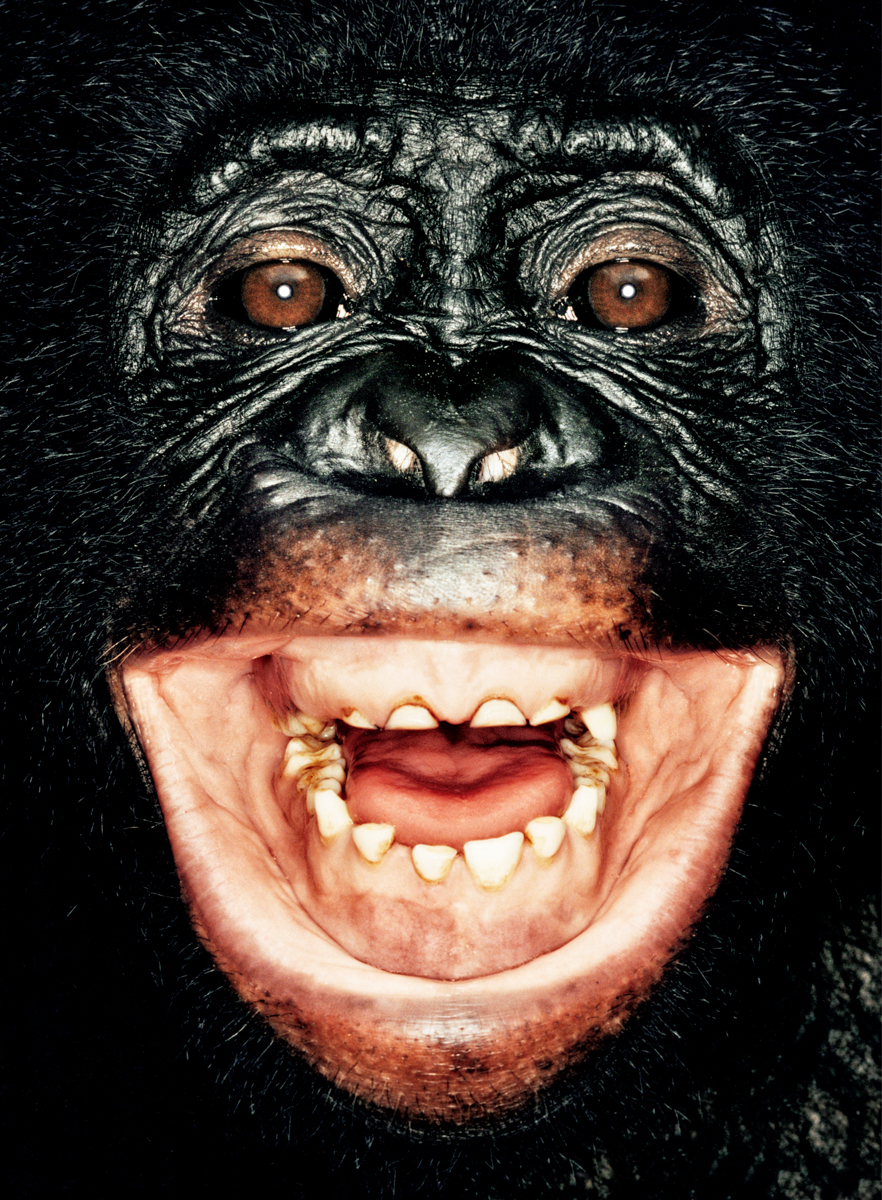
“Apes inhabit the grey area between man and animal,” Mollison says. None of Mollison’s apes look bored, but each sparkle with a familiar feeling of personality and character. “They each have a distinct character which is very familiarly human.”
Dr. Jane Goodall, one of the world’s most respected primatologists, collaborated with Mollison for the project. She notes that we humans only differ from the apes photographed by a mere one percent of DNA composition.“And we share a common ancestor,” Goodall writes. “A chimp-like human-like creature who lived some six to seven million years ago.”“We now know that the great apes are capable of many intellectual behaviours once thought unique to us –
hardly surprising, in view of the similarities in the anatomy of our brains.”
Mollison has watched the viral rise of the Bored Apes Yacht Club with interest. For some, the idea of owning a bored ape via a blockchain code is a strange, quixotic desire. But, for Mollison, having an ape as an avatar, as a way to express who you are, makes perfect sense.
“It’s a good thing to want to identify with an ape and show yourself as an ape,” he says. “Because they’re so close to us.”
Before Bored Ape Yacht Club, James Mollison’s apes were reflecting who we are. Apes should be in the wild, or protected from predatory harm. Own an NFT of one now, and show the world who you really are.
James Mollison’s beautiful portraits of the great apes are being minted as NFTs for the first time by ART3.io as #JAPES, with 10% of net proceeds from the sale going to the ape sanctuaries in Africa who rescued these animals and invited James in with his camera.


